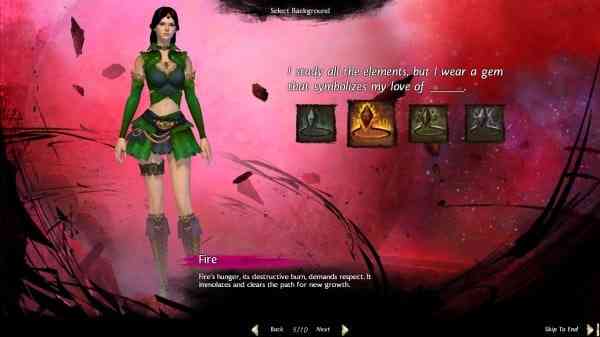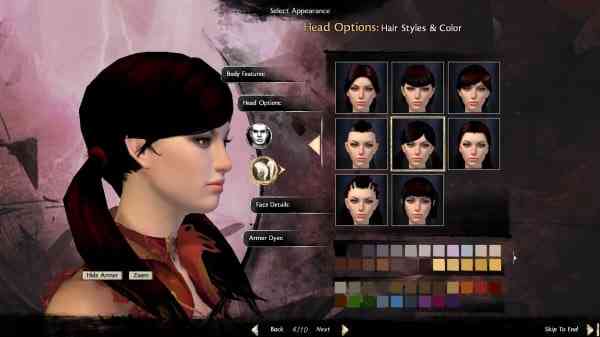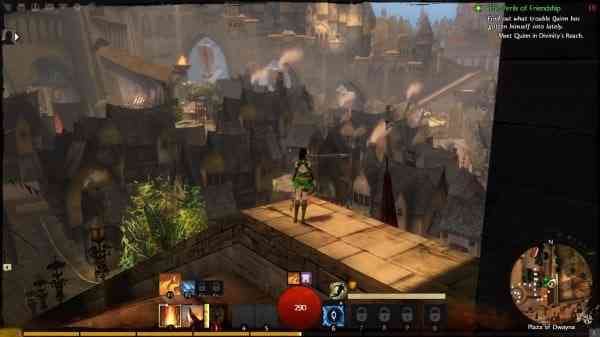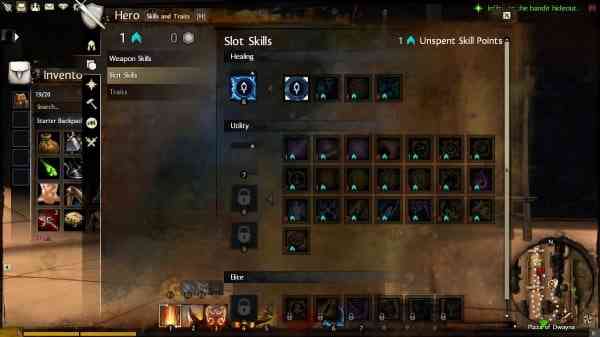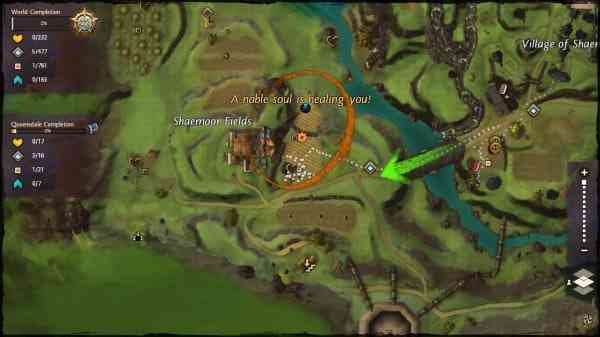Guild Wars will always hold a special place in my heart. It was my first MMO and my first true online gaming experience. In many ways the original game is what really set my online gaming passion on fire. I still fondly remember fumbling my way around the starting area, clueless what to do, and then I found the dance emote. 10 MMO’s and 7 years later, Guild Wars still ranks as one of my favourite online PC games. Having played every episode I have anxiously been awaiting the chance to play Guild Wars 2. This past weekend I had the opportunity to play during the open beta event. Unfortunately, due to inevitable server problems and errors that one can expect during an open beta, my time in game was short; however, despite only playing for a few hours, I can see that the game has exceeded my expectations already.
Once I was able to log in, I spent a good half hour creating my character. At the character select screen I found that three races were playable in the beta including Human, Charr, and Norn. There are also two other races that will be playable at launch, Silvaria and Asura. Once you choose a race there are eight different professions to choose from including Elementalist, Warrior, Mesmer, Necromancer, Guardian, Thief, Engineer and Ranger. Noticeably absent are the healer and the monk class as all professions now have the ability to heal depending on what skills and weapons you equip. I prefer playing a magic character so I was drawn to the Elementalist, the same class I played in the first game. With the choice of four elemental atunements, I selected fire as I have experience playing as a pyromancer in the past and love the destructive force of fire spells.
After customizing my character’s appearance, I was asked a variety of questions about my character’s background, how were they raised, what were their biggest life regrets, and more. My answers to these questions, along with the character’s race, shaped their “personal story”, which becomes the game’s main quest line.
When I first launched into the game I must admit I was a bit put off by the art style. I wasn’t quite sure what it was, perhaps it was a bit too cartoonish, but as I played it grew on me and I realized just how gorgeous the graphics really are. Even with many of the graphic settings set to low, the game looked absolutely stunning. The colours were vibrant while the characters, the landscape, and everything else looked so well defined. Playing on what would be considered a low to mid-range gaming PC, the frame rate was fairly decent with the higher graphical settings turned on, only slowing down slightly in a highly populated area. For optimized performance, I kept my settings at medium.
In regards to the sound, the music was beautiful but I found the voice acting to be quite mixed. While I could come across some good voice acting there were times where I found the conversation during cut scenes laughable. Dialogue is shown as cinematic of two characters conversing in front of a background of the game’s artwork. I felt this was poorly done; however, I did note the “work in progress” stamp in the right corner, so maybe this is just a place holder for now.
The skills system in Guild Wars 2 is a bit different from the first game. There are 10 skill slots available, with the first five slots assigned by the game itself. These skills slots are weapons skills, which are determined by your profession and weapon equipped. As an elementalist, my atunement was also a factor – my skills changed depending on the element I had selected. Starting out with one skill slot, the other four slots are unlocked by using your weapon. For example, I started out with a fireball spell, and after I killed five mobs my next weapon skill was unlocked; however, changing to a different element with the same weapon gave me a different set of skills to be unlocked. You can equip two weapon sets at a time, allowing you to quickly switch weapons during battle. In regards to the last five skill slots, these are left for you to you to decide what to put in them. Unlocking at levels 5, 10, 20 and 30, these slots can be filled with healing, unity or elite skills, depending on which slot has been unlocked. I did manage to reach Level 5, and was rewarded with the a Skill point to spend on a healing skill, which I then placed in the sixth slot
Questing was considerably different from the previous game. As I indicated earlier, the main quest is based on your character’s personal story, which is based on the biography of your character. Replacing the missions from the first game is that Guild Wars 2’s story is told through a series of instances. These instances can be completed solo or with a group, but you are the only one who can make decisions and determine the outcome. The core story however is the same for all those who are playing with you. I completed a few of the instances, but I could not progress until I further leveled my character.
To gain experience I decided to explore my home area, and spent my time filling Renown Hearts in the region. Marked by an empty heart on the map, I can best describe these as side quests. These “quests” involve helping NPC’s with tasks such as picking apples, feeding cows, scaring off bandits and more. These “quests” are basically actions the make the NPC in the region happy, which fills the heart. There is no need to interact with the NPC as you can simply enter the area and start working at completing the goal. A meter on the right hand side of the screen measures progress. Once the heart is filled, you are rewarded with experience and money, and you have the ability to sell certain items to the NPC you are helping.
While I was helping one of the farmers in the area clear his orchard of bats and spider eggs orange text suddenly splashed across the screen, stating “New Event Nearby”. I suddenly found myself in the midst of some kind of world event. Working together with other players questing in the area, we cleared the area of a large spider boss. Similar to the public quests from Warhammer Online, these Dynamic Events apparently trigger only when certain conditions are met. Once the event has been completed, rewards of karma, money and experience are given depending on the each player’s level of participation. There are three different reward tiers, which are Bronze, Silver or Gold. Should you leave the area to explore elsewhere (I did a couple times, these events can take upwards of a half an hour, depending on how many players there are) you are still rewarded for your participation. Usually occurring near a Renown Heart, looking at the world map, you can determine where an event is taking place – indicated by a large orange circle. For those wondering, these events are do not affect the outcome of your personal story.
After completing all of the Renown Hearts in my home area, I ventured into the city of Divinity’s Reach to explore. Never have I seen a city in an MMO so vast and so detailed. I barely scratched the surface, as I found myself exploring every nook and cranny, speaking to every vendor. You’ll spend a lot of time in this, and any other city similar to it, given the level of detail and the size of the city.
After having just a small taste Guild Wars 2, I am left wanting more. Although I only spent approximately six hours or so playing I am very impressed with the little bit of the game that I have seen. At this stage of the game’s development, I can already see that it is a polished, well put together game, and I can hardly wait to further explore the world of Tyria when Guild Wars 2 releases later this year.
